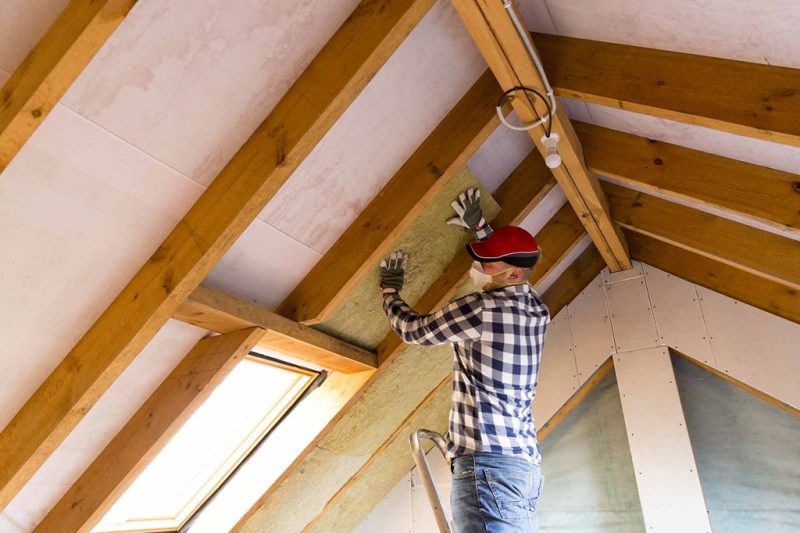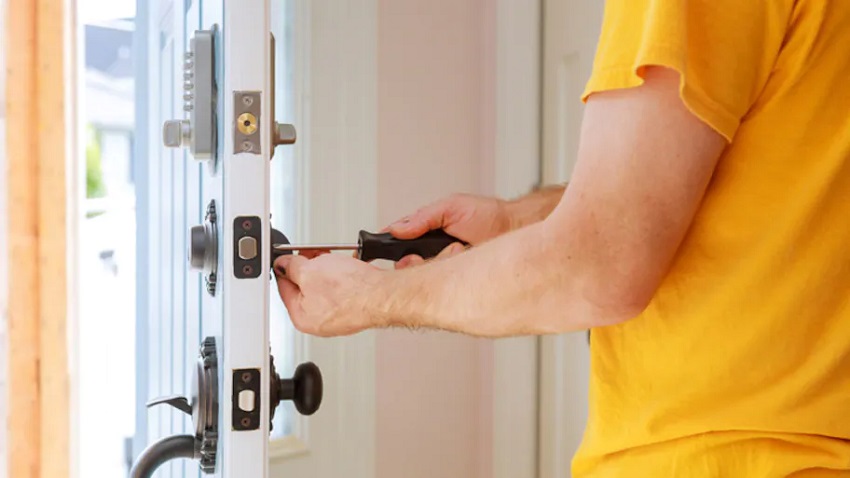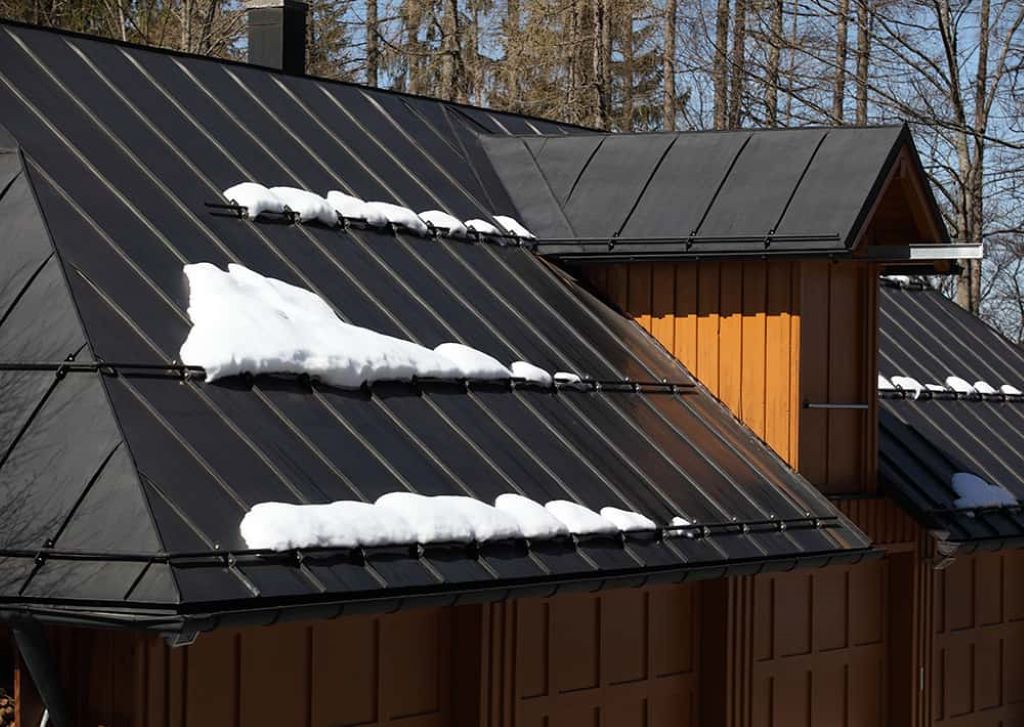When it comes to keeping your home comfortable, insulating a vaulted ceiling is important. It helps to keep the temperature inside your home more stable and can lower your energy bills. If you want to learn how to insulate a vaulted ceiling, there are many resources available online to guide you through the process. It also helps reduce outside noise, making your home a more peaceful place to be. Although it can be challenging to insulate a vaulted ceiling, it’s definitely worth it in the long run.
There are many options for choosing insulation materials and methods for vaulted ceilings.
Here are 20 tips to help you insulate your vaulted ceiling effectively:
1. Use Faced Fiberglass Batt Insulation
Fiberglass batt insulation with kraft paper facing is often one of the most affordable and practical options for insulating vaulted ceilings. The rigid facing helps hold the insulation in place between joists or rafters. Staple the facing to the framing and cut the batts to fit snugly.
2. Consider Spray Foam Insulation
Spray foam insulation offers an air-sealing advantage over fiberglass. The foam expands and seals gaps and cracks that could otherwise allow airflow and drafts. This makes it an excellent option for cathedral ceilings that are harder to insulate. Hire a professional installer for the best results.
3. Install Rigid Foam Board Insulation
Rigid foam insulation boards of polystyrene or polyisocyanurate can be installed above or below rafters. Use adhesive to attach the boards tightly and seal gaps with expanding foam sealant. The high R-value of rigid foam provides excellent thermal performance.
4. Dense Pack Cellulose Insulation
Cellulose insulation made from recycled paper products can be professionally densely packed into vaulted ceilings for a very effective air seal. The thick installation prevents settling and fills every gap thoroughly. Blown-in dampness, the cellulose adheres well between rafters.
5. Combine Insulation Types
Consider a hybrid approach using both batt insulation for coverage between framing and spray foam or rigid foam to seal and fill gaps. The combination provides both insulation and air sealing for optimal efficiency and performance.
6. Install Insulation Baffles
Baffles maintain ventilation space along the underside of the roof sheathing while allowing insulation to be placed directly on the sloped portion of the ceiling. Proper airflow under the roof is essential to prevent moisture issues.
7. Use Insulation Hangers

Hangers fastened across the rafters or trusses hold faced batt insulation in place vertically. This prevents insulation from sagging and leaving gaps at the top of the vaulted ceiling over time. Hangers also make installing insulation easier.
8. Include Radiant Barriers
Radiant barriers like reflective insulation or aluminum foil can be installed under rafters before laying insulation. These reflect heat flow, adding another layer of thermal performance and keeping insulation cleaner.
9. Seal All Penetrations
Sealing ceiling electrical boxes, recessed lights, bathroom fans, and other caulk or spray foam penetrations are important to minimize air leaks. This step is easy to miss but critical for proper insulation performance.
10. Install Wind Wash Barriers
Wind wash occurs when outdoor air infiltrates the soffit vents and blows insulation away from the rafters. Installing a rigid foam or house wrap inside the roof line prevents wind washing.
11. Carefully Insulate Cathedral Ceilings
The sloped shape of a cathedral ceiling requires cutting insulation to fit tightly between each rafter bay from the top of the roof down. Leaving gaps can diminish insulation effectiveness. Use rigid foam also to address the air leakage in cathedral ceilings.
12. Add Insulation to Flat Ceiling Areas
When vaulted ceilings transition to standard flat ceilings, thoroughly insulate the flat portions. This connects the thermal envelope across ceiling planes. Use unfaced batts here for ease of installation.
13. Ensure Proper Attic Ventilation
Proper attic ventilation above the insulated vaulted ceiling helps keep the roof assembly dry and prevents moisture issues like ice dams. Consult a roofer if needed to confirm adequate airflow.
14. Address Existing Mold or Moisture

Fix any roof leaks or moisture issues with the vaulted ceiling before insulating. Remove mold with products like Concrobium and correct high humidity levels if needed. Insulating over mold can exacerbate issues.
15. Consider Adding Interior Rigid Foam
Installing 1-2 inches of rigid foam insulation directly beneath the rafters for cathedral ceilings can further boost thermal performance before the drywall ceiling goes up. Foam adds insulation value and air sealing.
16. Install Insulation to Proper Depth
Check insulation depth recommendations for your climate zone and achieve the required R-value. This typically means packing insulation 12-15 inches deep between rafters depending on the insulation R-value per inch. Proper coverage is critical.
17. Wear Protective Gear
Use an N95 mask, gloves, long sleeves, and eye protection when installing insulation to minimize exposure to irritating fibers and particles. Work carefully on ladders and scaffolding to safely access the vaulted area.
18. Hire Professionals as Needed
Don’t be afraid to bring in insulation contractors if a vaulted ceiling project seems too complicated or risky. Professionals have the know-how, proper safety equipment, and insurance to do the job correctly.
19. Air Seal the Attic Plane
Sealing the attic floor with rigid foam or caulk is essential to prevent air leakage between the attic and the insulated vaulted ceiling below. This contributes significantly to energy efficiency.
20. Consider Energy Rebates and Tax Credits
Adding insulation may qualify for utility rebates, state/federal tax credits, or other incentive programs. Check databases like DSIRE for insulation, air sealing, and additional energy-related home improvement incentives. Proper documentation will be required.
By carefully evaluating your vaulted ceiling design and insulation needs, selecting suitable materials, and properly installing products like faced batt insulation, spray foam, and rigid foam boards, you can successfully insulate your vaulted ceiling for improved comfort and energy savings. Don’t forget critical steps like sealing penetrations, allowing attic ventilation, and using baffles and hangers. With the right insulation plan, you can quickly and effectively insulate a vaulted ceiling.
Conclusion

Insulating a vaulted ceiling correctly takes research, planning, and care. You can create an effective insulation strategy with various materials like fiberglass batts, spray foam, cellulose, and rigid foam boards. Don’t forget critical details like rafter baffles, caulking penetrations, and maintaining attic ventilation. Considering the home energy savings from a well-insulated vaulted ceiling, the investment of time and care pays dividends in comfort and reduced utility costs for years to come. Take advantage of the many insulation options and techniques to tackle your vaulted ceiling project like a pro.
Frequently Asked Questions
1. How much insulation do I need for a vaulted ceiling?
Check your climate zone insulation recommendations, but typically, an R-38 to R-60 insulation value is ideal for vaulted ceilings. This usually requires 12-15 inches of standard insulation like faced batts. Supplement with rigid foam boards or spray foam for optimal air sealing and R-value.
2. Should insulation touch the roof deck in a vaulted ceiling?
No, you need ventilation space between the roof sheathing and insulation. Use insulation baffles to maintain at least a 1-2″ air gap along the entire length of the vaulted ceiling to allow air movement. Proper attic ventilation prevents moisture issues.
3. How do you ventilate a vaulted ceiling?
Install soffit vents low along the roof eaves to draw in fresh air. Add ridge vents at the roof’s peak to allow hot air to escape the attic space. Consider gable end vents or turbines for cathedral ceilings to ensure adequate airflow.
4. What are the best insulation methods for vaulted ceilings?
Faced batt insulation offers an affordable and accessible option. Spray foam and rigid foam excel at air sealing. Dense-packed cellulose fills every gap. Often, a combination approach works best. Radiant barriers also help block heat transfer.
5. Should insulation be installed above or below roof rafters?
Insulation can go above or below the rafters if properly air-sealed and ventilated. Installing below leaves room for easy attic storage but risks compressing insulation over time. The above requires baffles but leaves the attic clear.




